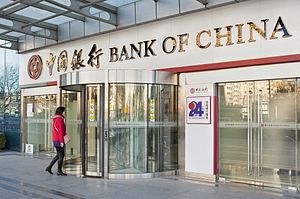As I wrote in June, the Chinese courts are flooded with private (or “shadow”) lending cases, involving increasingly large amounts of money. The law on shadow lending is particularly unclear and fluid, causing uncertainty for debtors, lenders, and judges. Government recognition of internet lending and P2P lending, now at an early stage, means that many more shadow lending disputes are destined for the already stressed court system.
On August 6 the Supreme People’s Court (SPC) issued what it calls a “judicial interpretation” to set out basic rules for private lending. This private lending judicial interpretation, which will become effective on September 1, applies to P2P internet platforms but not internet platforms operated by entities regulated by financial regulators.
When announcing the private lending judicial interpretation, the SPC released updated statistics on private lending. Private lending disputes are the second most numerous type of civil case in the Chinese courts, with 526,000 cases in the first six months of this year, up 26 percent in comparison to the same period in 2014. The flood of cases has put enormous pressure on the court, and uncertainty concerning the legal structure has affected all parties, from small and medium enterprises to judges and lawyers.
The drafting of the SPC interpretation had been underway for over three years, and the government’s push for greater financial reform is one of the significant factors driving the SPC to issue this judicial interpretation.
The judicial interpretation does the following:
- Defines private lending as lending between individuals, legal persons, and other entities (excluding financial institutions);
- Describes the type of documentation required for a party to file suit, as well as rules for where private lending cases may be heard;
- Sets out rules relating to allegations of criminal conduct in private lending;
- Rules on the validity of private lending contracts;
- Imposes liability on P2P platforms if the platform provides security for the loan;
- Rules concerning the forced sale of borrower property if he fails to repay the loan;
- Steps away from the rule of many years standing that inter-company loans are invalid. The interpretation recognizes that circumstances have changed, and that private loans are an important sources of funding for companies in need of funding, but takes a cautious approach;
- Sets out rules on invalidity and abuse of process;
- Sets out rules regarding interest and interest rate on private loans. If the parties have not agreed on the interest rate or if the agreement between individuals is unclear, the lender cannot charge interest during the period of the loan. If the agreed interest rate exceeds 24 percent, the lender can demand payment of interest at the agreed upon rate, but if the annual interest rate exceeds 36 percent, the proportion exceeding 36 percent is invalid. The interpretation also has provisions on prepayment of loans and the calculation of the principal of a loan if interest is withheld from it.
The SPC did not engage in public consultation when drafting the judicial interpretation, but consulted with relevant regulators, industry associations, and specialists. The issues must have been considered difficult to pitch right, because the judicial committee of the SPC, the body within the SPC that approves judicial interpretations, discussed it five times before finalizing it.
This interpretation is likely to bring private lending out of the shadows and is beneficial for all sides — lenders, P2P companies, and borrowers — because they will know where they stand.
Susan Finder blogs as the Supreme People’s Court Monitor. She previously taught law at the City University of Hong Kong, where she wrote the first comprehensive analysis of the Supreme People’s Court and practiced with the China business group of Freshfields, Bruckhaus and Deringer and two U.S. law firms.
































